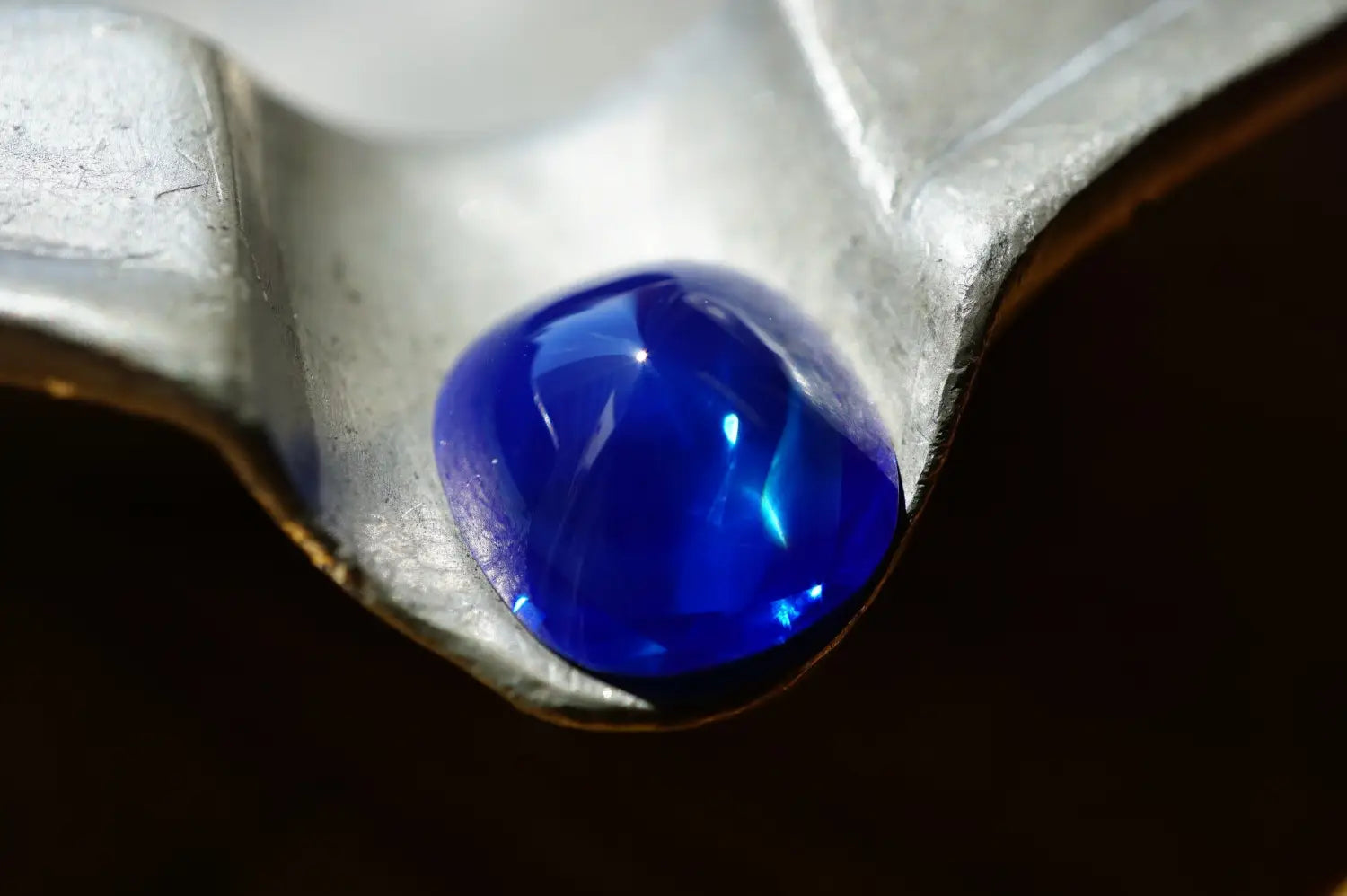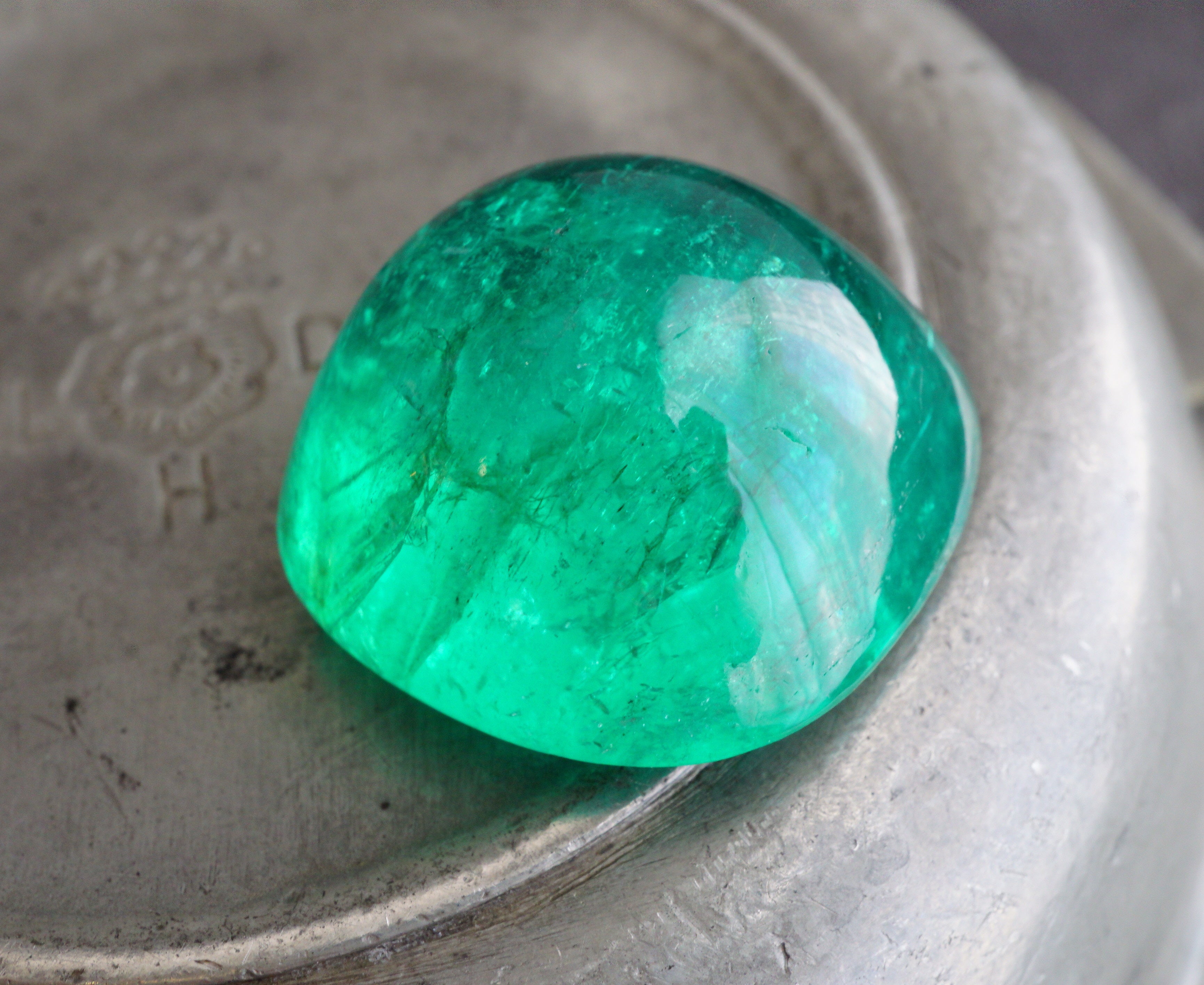
Kashmir Sapphires: The Legendary Blue Sapphires You Should Know
When you think of sapphires, the color blue likely comes to mind. Out of all sapphire hues, blue is the most iconic. But among all blue sapphires on Earth, the most prized and beautiful are indisputably the legendary Kashmir sapphires.
The allure of Kashmir sapphires began with their unexpected discovery in 1881 in the high, nearly inaccessible Himalayas of northwest India. This remote location is so difficult to reach that only a few trained geologists have ever been there. The discovery was triggered by a landslide, which exposed vibrant blue crystals unlike anything seen before. These sapphires were found in a glacial cirque thousands of feet high on the slopes of the Himalaya’s rugged Zanskar Range in the Paddar region of Kashmir.

Late 19th-century brooch set with three extremely rare natural Kashmir sapphires of impressive size and with a similar color and quality.
Legend tells us that in ancient times, the land was inhabited by giants. One day, the giants stole a piece of the velvety blue sky from the gods. Enraged, the gods turned the giants into mountains—the highest in the world—but in their haste, they left behind the stolen sky, which became the blue sapphires of Kashmir.
Zanskari traders, braving the treacherous terrain, were the first to introduce Kashmir sapphires to the outside world. Local villagers traded these gems for goods such as salt. Before long, the sapphires reached larger commercial centers, where they were celebrated for their beauty and immense value.
The Special Qualities of Kashmir Sapphires
What made the Kashmir sapphires so desirable was their extraordinary vivid blue color—often called “cornflower blue”—a moderate purplish-blue, the finest of which is likened by those in India to the striking color of a peacock’s neck. Moreover, the deep blue is highly saturated and uniform throughout the stones and lacks the modifying colors of green and pink in many other blue sapphires. Remarkably, the color remains consistent in different lighting conditions.
Kashmir sapphires are also admired for their velvety luster, which is caused by tiny internal imperfections known as “silk.” These are long, thin inclusions of the mineral rutile that intersect within the stone, scattering light and creating a soft, velvety effect that enchants observers with its ethereal beauty.

When the Maharaja of Kashmir learned of these exceptional sapphires, he claimed ownership of the mines in 1882, sending troops to guard them. The crystals were mined by hand, in a process compared to “digging for potatoes.” Some crystals were said to be “as large as eggplants” or “bigger than a croquet ball.” The finest Kashmir sapphires were unearthed during this period before the mines were depleted in 1887.
Kashmir Sapphires: The Rarest of Them All
Although more sapphires were later discovered in the region, none matched the quality of those from the original Old Mine. These rare gems have come to represent the pinnacle of blue sapphires, surpassing even some of the finest Ceylon and Burmese sapphires in value and beauty. For comparison, Burmese sapphires are known for their deeper “royal blue” hue, while Ceylon (Sri Lankan) sapphires tend to be lighter in tone.
The limited production from the Old Mine means that only a small fraction of the world’s blue sapphire supply comes from Kashmir, making these sapphires the rarest blue sapphires available.
Surprisingly, few Kashmir sapphires are found in the great treasuries of the world. Today, you can find them at renowned jewelry houses such as Cartier and Harry Winston, at prestigious jewelry auctions, in private collections, and here at Jogani, where we are honored to have a few spectacular Kashmir sapphires in our inventory. They are truly some of the rarest and finest gemstones in the world.
Photo top: A 10.49-carat, sugarloaf, unheated Kashmir sapphire from the Jogani collection.


